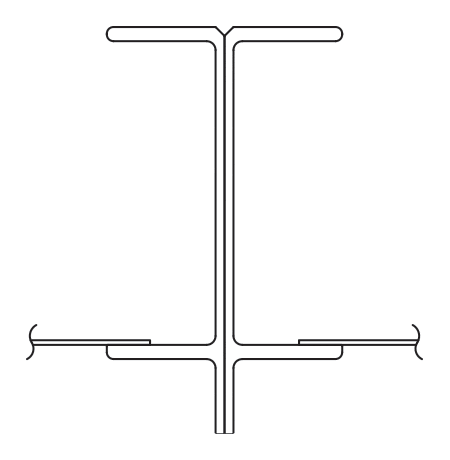Lowest seam losses
DISCUS bolted seam

While welded seams are zero loss, bolted seams have been problematic. Default bolted seam loss factors are high. DISCUS bolted seam loss has been tested according to API and EPA standards, and is the lowest seam ever tested—700x lower than the AP-42 bolted seam loss factor.
In accordance with API 650 H.6.2 and H.6.4 (see notes 1 &2), deck seams that are required to be vapor-tight shall be tested for leaks by the shop- and field-joint assembler. DISCUS shop and field tests 100% of the seams to assure your confidence in our installed quality and our AP-42 ultra-low bolted seam emissions factor.
| Test | Vacuum (inches of water) | % of AP-42 |
|---|---|---|
| AP-42 3 | 0.050 | 100% (1x) |
| DISCUS Field Air Test 4,5 | 0.433 | 866% (8.66x) |
| DISCUS Shop Test | 4.0+/- | 8,000% (80x) |
| API Low Vacuum Box 6 DISCUS field seam test | 83 to 138 | 166,000% (1,660x) to 276,000% (2,760x) |
| API High Vacuum Box 6 Optional DISCUS field test | 221 to 277 | 442,000% (4,420x) to 544,000% (5,540x) |
[ Notes ]
- API 650 Annex H.6.2 “Deck seams and other joints that are required to be vapor-tight per H.4.1.3 shall be tested for leaks by the shop or field joint assembler. Joint testing shall be performed by means of penetrating oil or another method consistent with those described in this standard for testing cone-roof and/or tank-bottom seams, or by any other method mutually agreed upon by the Purchaser and the roof Manufacturer.”
- API 650 Annex H.6.4 “Any flotation compartment that is completely shop-fabricated or assembled in such a manner as to permit leak testing at the fabricating shop shall be leak tested at the shop as well as retested in the field …”
- API MPMS Chapter 9 Part D 13.3.2 “Fugitive Emission Test Method for the Measurement of Deck-Seam Loss Factors for Internal Floating-Roof Tanks”.
- Average value, varies by tank size and accessories included, typical for 120’ tank size.
- API 650 7.3.7.1 “Upon completion, the roof of a tank designed to be gas-tight (except for roofs designed under 7.3.7.2, F.4.4, and E.7.5) shall be tested by one of the following methods.
— a. Applying internal air pressure not exceeding the weight of the roof plates and applying to the weld joints a bubble solution or other material suitable for the detection of leaks.
— b. Vacuum testing the weld joints in accordance with 8.6 to detect any leaks. - API 650 8.6.3 A partial vacuum of 21 kPa (3 lbf/in.2, 6 in. Hg) to 35 kPa (5 lbf/in.2, 10 in Hg) gauge shall be used for the test. If specified by the Purchaser, a second partial vacuum test of 56 kPa (8 lbf/in.2, 16 in. Hg) to 70 kPa (10 lbf/in.2, 20 in. Hg) shall be performed for the detection of very small leaks.